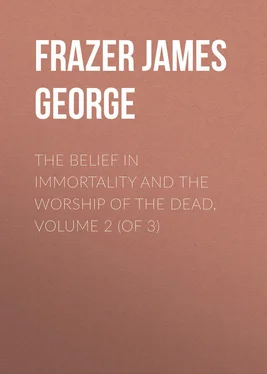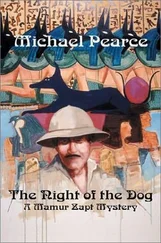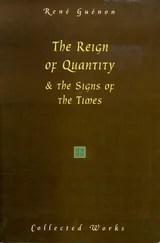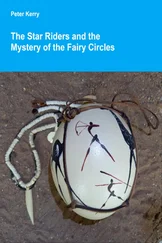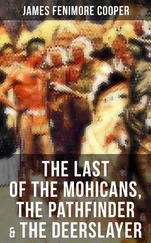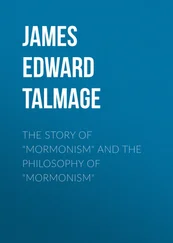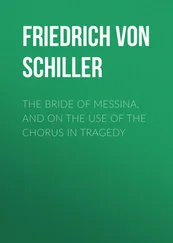James Frazer - The Belief in Immortality and the Worship of the Dead, Volume 2 (of 3)
Здесь есть возможность читать онлайн «James Frazer - The Belief in Immortality and the Worship of the Dead, Volume 2 (of 3)» — ознакомительный отрывок электронной книги совершенно бесплатно, а после прочтения отрывка купить полную версию. В некоторых случаях можно слушать аудио, скачать через торрент в формате fb2 и присутствует краткое содержание. Жанр: foreign_antique, foreign_prose, на английском языке. Описание произведения, (предисловие) а так же отзывы посетителей доступны на портале библиотеки ЛибКат.
- Название:The Belief in Immortality and the Worship of the Dead, Volume 2 (of 3)
- Автор:
- Жанр:
- Год:неизвестен
- ISBN:нет данных
- Рейтинг книги:3 / 5. Голосов: 1
-
Избранное:Добавить в избранное
- Отзывы:
-
Ваша оценка:
- 60
- 1
- 2
- 3
- 4
- 5
The Belief in Immortality and the Worship of the Dead, Volume 2 (of 3): краткое содержание, описание и аннотация
Предлагаем к чтению аннотацию, описание, краткое содержание или предисловие (зависит от того, что написал сам автор книги «The Belief in Immortality and the Worship of the Dead, Volume 2 (of 3)»). Если вы не нашли необходимую информацию о книге — напишите в комментариях, мы постараемся отыскать её.
The Belief in Immortality and the Worship of the Dead, Volume 2 (of 3) — читать онлайн ознакомительный отрывок
Ниже представлен текст книги, разбитый по страницам. Система сохранения места последней прочитанной страницы, позволяет с удобством читать онлайн бесплатно книгу «The Belief in Immortality and the Worship of the Dead, Volume 2 (of 3)», без необходимости каждый раз заново искать на чём Вы остановились. Поставьте закладку, и сможете в любой момент перейти на страницу, на которой закончили чтение.
Интервал:
Закладка:
273
Captain James Wilson, Missionary Voyage to the Southern Pacific Ocean , pp. 283 sq.
274
The tomb described and illustrated by the first missionaries had four massive and lofty steps, each of them five and a half feet broad and four feet or three feet nine inches high. See Captain James Wilson, l. c. , with the plate facing p. 284. One such tomb, rising in four tiers, is ascribed traditionally to a female Tooitonga, whose name has been forgotten. See (Sir) Basil Thomson, "Notes upon the Antiquities of Tonga," Journal of the Anthropological Institute , xxxii. (1902) p. 88 n. 2.
275
The Tahitian chestnut ( Inocarpus edulis ); see above, p. 74, note2.
276
(Sir) Basil Thomson, Diversions of a Prime Minister (Edinburgh and London, 1894), pp. 379 sq. ; id. "Notes upon the Antiquities of Tonga," Journal of the Anthropological Institute , xxxii. (1902) p. 86. According to an earlier authority, the Tongans could name and point out the tombs of no less than thirty Tooitongas. See the letter of Mr. Philip Hervey, quoted in Proceedings of the Society of Antiquaries of London , Second Series, vol. ii. p. 77.
277
(Sir) Basil Thomson, "Notes upon the Antiquities of Tonga," Journal of the Anthropological Institute , xxxii. (1902) pp. 86 sq. , 88 n. 2. As to the legend of the tyrant Takalaua, see id. Diversions of a Prime Minister , pp. 294-302.
278
Captain James Wilson, Missionary Voyage to the Southern Pacific Ocean, p. 252. As to Futtafāihe, the Tooitonga or divine chief of their time, the missionaries remark ( l. c. ) that "Futtafāihe is very superstitious, and himself esteemed as an odooa or god." Here odooa is the Polynesian word which is usually spelled atua . Mariner tells us ( Tonga Islands , ii. 76) that the family name of the Tooitonga was Fatafehi, which seems to be only another way of spelling Futtafāihe, the form adopted by the missionaries. Captain Cook similarly gives Futtafāihe as the family name of the sacred kings or Tooitongas, deriving the name "from the God so called, who is probably their tutelary patron, and perhaps their common ancestor." See Captain James Cook, Voyages , v. 425.
279
Captain James Wilson, Missionary Voyage to the Southern Pacific Ocean , pp. 283-285. The description is accompanied by an engraved plate, which illustrates the three types of tombs mentioned in the text. In the foreground is the stepped pyramid, a massive and lofty structure, its flat top surmounted by a hut. To the right, in the distance, is seen the square walled enclosure, with high stones standing upright at the corners of the walls, and with a hut enclosed in the middle of the square. In the background appears a mound enclosed by a wall and surmounted by a hut. Thus a hut figures as an essential part in each type of tomb. However, Mariner tells us that "they have several fytocas which have no houses on them" ( Tonga Islands , i. 392 note *).
280
The Tooi-tonga-fafine (or fefine) was the Tooitonga's sister and ranked above him. Her title means "the lady Tooi-tonga." "Her dignity is very great. She is treated as a kind of divinity. Her rank is too high to allow of her uniting herself in marriage with any mortal: but it is not thought wrong or degrading for her to have a family, and in case of the birth of a daughter the child becomes the Tamaha . This lady rises higher than her mother in rank, and is nearer the gods. Every one approaches her with gifts and homage. Her grandfather will bring his offerings and sit down before her, with all humility, like any of the common people. Sick people come to her for cure" (Miss Sarah S. Farmer, Tonga and the Friendly Islands , p. 145, apparently from the information of Mr. John Thomas). Captain Cook learned with surprise that Poulaho, the Tooitonga of his time (whom Cook speaks of as the king) acknowledged three women as his superiors. "On our inquiring, who these extraordinary personages were, whom they distinguish by the name and title of Tammaha , we were told that the late king, Poulaho's father, had a sister of equal rank, and elder than himself; that she, by a man who came from the island of Feejee, had a son and two daughters; and that these three persons, as well as their mother, rank above Futtafaihe the king. We endeavoured, in vain, to trace the reason of this singular pre-eminence of the Tammahas ; for we could learn nothing besides this account of their pedigree. The mother and one of the daughters called Tooeela-Kaipa, live at Vavaoo. Latoolibooloo, the son, and the other daughter, whose name is Moungoula-Kaipa, reside at Tongataboo. The latter is the woman who is mentioned to have dined with me on the 21st of June. This gave occasion to our discovering her superiority over the king, who would not eat in her presence, though she made no scruple to do so before him, and received from him the customary obeisance, by touching her foot." See Captain James Cook, Voyages , v. 430 sq.
281
J. Dumont d'Urville, Voyage de l'Astrolabe, Histoire du Voyage , iv. (Paris, 1832) pp. 106-108. Singleton was an Englishman, one of the crew of the Port-au-Prince , the ship in which Mariner sailed. When Dumont d'Urville visited Tonga, Singleton had lived as a native among the natives for twenty-three years; he was married and had children, and he hoped to end his days in Tongataboo. See J. Dumont d'Urville, op. cit. iv. 23 sq.
282
"Extrait du Journal de M. de Sainson," in J. Dumont d'Urville, Voyage de l'Astrolabe, Histoire du Voyage , iv. (Paris, 1832) pp. 361 sq.
283
Jérôme Grange, in Annales de la Propagation de la Foi , xvii. (1845) pp. 12 sq.
284
J. E. Erskine, Journal of a Cruise among the Islands of the Western Pacific (London, 1853), p. 130.
285
Thomas West, Ten Years in South-Central Polynesia (London, 1865), pp. 268 sq.
286
(Sir) Basil Thomson, Diversions of a Prime Minister , pp. 379 sq. ; id. "Notes upon the Antiquities of Tonga," Journal of the Anthropological Institute , xxxii. (1902) pp. 86-88.
287
(Sir) Basil Thomson, "Notes upon the Antiquities of Tonga," Journal of the Anthropological Institute , xxxii. (1902) pp. 87 sq.
288
(Sir) Basil Thomson, Diversions of a Prime Minister , p. 379.
289
Captain James Cook, Voyages , v. 424. Elsewhere (v. 364) he speaks of "a morai or fiatooka "; and shortly afterwards, referring to the same structure, he mentions it as "this morai , or what I may as well call temple" (p. 365). As to the equivalence of the words morai and marai ( marae ), see J. A. Moerenhout, Voyages aux Îles du Grand Océan (Paris, 1837), i. 466; and as to the significance of the word in its various dialectical forms, see E. Tregear, Maori-Polynesian Comparative Dictionary , p. 213, s. v. "malae."
290
Captain James Cook, Voyages , i. 157 sqq. ; J. R. Forster, Observations made during a Voyage round the World (London, 1788), pp. 543 sqq. ; Captain James Wilson, Missionary Voyage to the Southern Pacific Ocean , pp. 207 sqq. ; David Porter, Journal of a Cruise made to the Pacific Ocean (New York, 1822), ii. 38 sq. ; D. Tyerman and G. Bennet, Journal of Voyages and Travels (London, 1831), i. 240-248, 265 sqq. , 271, 274, 529 sq. , ii. 13 sq. , 38 sq. ; W. Ellis, Polynesian Researches , Second Edition (London, 1832-1836), i. 340, 405; J. A. Moerenhout, Voyages aux Îles du Grand Océan , i. 466-470; G. H. von Langsdorff, Reise um die Welt (Frankfurt am Mayn, 1812), i. 115, 134; H. Melville, Typee (London, N.D.), pp. 166-169 ( Everyman's Library ); Matthias G – , Lettres sur les Îles Marquises (Paris, 1843), pp. 54 sq. ; C. E. Meinicke, Die Inseln des Stillen Oceans (Leipzig, 1875-1876), i. 49, ii. 180, 183 sq. ; G. Gerland, in Th. Waitz, Anthropologie , vi (Leipzig, 1872) pp. 376 sqq.
Читать дальшеИнтервал:
Закладка:
Похожие книги на «The Belief in Immortality and the Worship of the Dead, Volume 2 (of 3)»
Представляем Вашему вниманию похожие книги на «The Belief in Immortality and the Worship of the Dead, Volume 2 (of 3)» списком для выбора. Мы отобрали схожую по названию и смыслу литературу в надежде предоставить читателям больше вариантов отыскать новые, интересные, ещё непрочитанные произведения.
Обсуждение, отзывы о книге «The Belief in Immortality and the Worship of the Dead, Volume 2 (of 3)» и просто собственные мнения читателей. Оставьте ваши комментарии, напишите, что Вы думаете о произведении, его смысле или главных героях. Укажите что конкретно понравилось, а что нет, и почему Вы так считаете.
